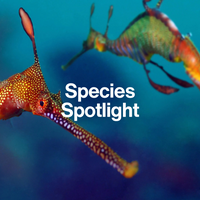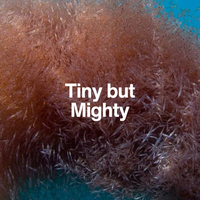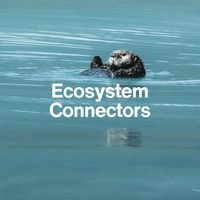The Fuel of the Southern Ocean
Antarctic Krill

Tiny, shrimp-like, and glowing in the dark—Antarctic krill might just be the most important animal you’ve never seen.
Introduction
The Unsung Engineers of the Ice
Antarctic krill (Euphausia superba) are small crustaceans that swarm in massive numbers in the cold, nutrient-rich waters of the Southern Ocean. Though each is only a few centimetres long, together they form one of the largest animal biomasses on the planet.
They are the engine of Antarctica’s food web—feeding whales, seals, penguins, fish, and seabirds. Without krill, the icy ecosystems of the Southern Ocean would collapse.

Ecological Role
A Swarm That Sustains a Continent
Antarctic krill are both grazers and carbon couriers. They feed on phytoplankton and algae, converting microscopic plant energy into protein-rich food for larger predators.
Their role includes:
- Trophic Transfer: Krill form a critical link between primary producers and top predators.
- Seafloor Fertilisation: Krill excrete carbon-rich faecal pellets that sink rapidly, helping move carbon to the ocean floor.
- Under-Ice Foraging: In winter, krill scrape algae from the underside of sea ice—fuelling survival during the long polar night.
Krill don’t just support Antarctica—they connect its surface life, its deep ocean, and even global climate systems.

Fun Fact
Antarctic krill have light-producing organs (called photophores) on their bodies—including near their eyes and tails. These bioluminescent flashes may help them stay together in swarms, deter predators, or even camouflage against moonlight from above!
Biology & Behaviour
Born to Swarm
Antarctic krill grow up to 6 cm long and can live for 5–7 years—surprisingly long for such small creatures.
They:
- Swim in massive swarms, sometimes over 10,000 individuals per cubic metre
- Undergo daily vertical migrations—rising at night to feed, sinking by day to avoid predators
- Use bioluminescence to communicate and potentially confuse predators
- Hatch from eggs that sink deep, with larvae slowly rising as they develop
Their lifecycle is perfectly tuned to the rhythms of polar light, ice, and plankton blooms.

Threats & Challenges
A Delicate Pulse Under Pressure
Despite their abundance, Antarctic krill face growing threats that ripple across the ecosystem:
Ocean warming
warming waters and shrinking sea ice reduce their habitat and food supply
Industrial Fishing
krill are increasingly harvested for omega-3 supplements and aquaculture feed
Ocean acidification
impacts early life stages and shell formation
These disruptions threaten the base of ocean productivity—and the species that depend on it.
Did you know?
A single blue whale can eat up to 4 tonnes of krill a day—over 40 million individuals!
Why They're Mighty
Tiny Architects of Antarctic Life
Antarctic krill prove that ecosystem architects don’t need to be large or fierce. By transferring the ocean’s energy upwards and drawing carbon downwards, they nourish life at every level—and help regulate the health of an entire continent.
Protecting krill is protecting Antarctica.

Key Takeaways

NEXT SPECIES
Meet the Ocean’s Glass-Winged Drifters: Sea Butterflies
They’re tiny snails with translucent “wings” that flutter through the sea. But these fragile creatures are also on the frontlines of climate change.




